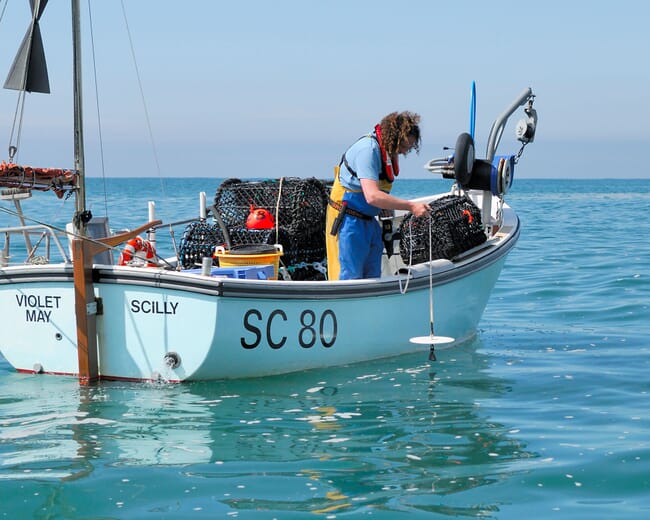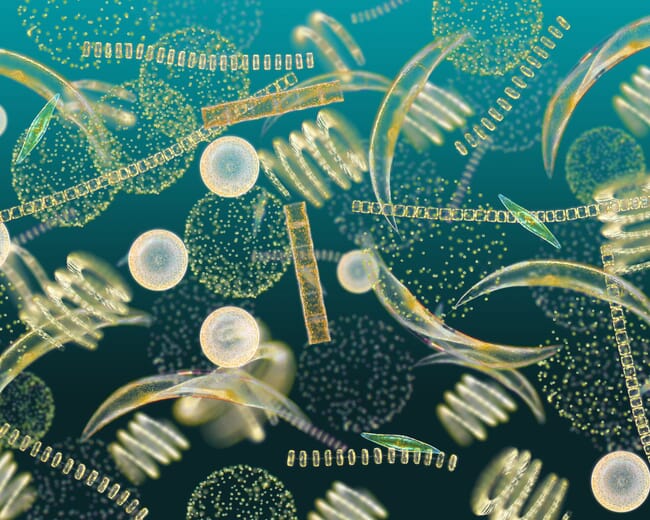Phytoplankton are the microscopic, plant-like cells that colour the sea green and begin the marine food web to determine the abundance of fish and other marine life. In 2010 a group of Canadian marine scientists produced a startling report in which they suggested the abundance of phytoplankton had declined globally by 40 per cent since the 1950s. The study, published in Nature, suggested that a warming of the ocean surface, due to climate change, had reduced the vertical mixing of the water column, thereby reducing the supply of nutrients from deeper waters – in effect the input of nutrients to the surface had lessened, thereby reducing phytoplankton growth.

The scientists’ results provoked debate, however, as others thought they saw no change or even an increase in phytoplankton in some places. Part of the controversy stems from a lack of continuous, long-term data on the phytoplankton, due to the vastness of the seas and oceans compared to the number of marine scientists. Because of the important role the phytoplankton play in fisheries and the marine ecosystem as a whole, it is vital to know if, how and why they are changing. This is where fishermen, acting as citizen scientists, are now helping out by taking part in the Secchi disk study.
So how does the Secchi disk study work? Plankton scientist Dr Richard Kirby conceived the study in 2013 and it teams a Secchi disk, which is a self-made component of the study, with a free Smartphone app called Secchi.
“Through their photosynthesis the phytoplankton bring life to the sea surface to begin the plankton food chain that supports fisheries,” Dr Kirby explains. “Most fish lay their eggs in the plankton so the fish larvae are surrounded by food when they hatch, and crabs, lobsters, shrimps, oysters and mussels begin their life as planktonic larvae for similar reasons. Quite simply, without the phytoplankton there would be no fisheries.”
“The Secchi Disk study has grown to be the world’s biggest citizen science plankton study in just 4 years since it’s launch in 2013 with data gathered by citizen scientists from all around the world,” he adds.
Papal legacy
The device being used in the study was invented in 1865 by the Pope’s astronomer, Angelo Secchi, to measure the clarity of the Mediterranean to help chart its currents. It is a very simple device – a round, white disk, exactly 30 cm in diameter, that is attached to either a fibreglass tape measure or a marked length of rope, and weighted from below. It can be made from any material – from a white plastic bucket lid, to a piece of painted plywood, Foamex, or a white plastic food preparation board.
Once made, users can lower the disks vertically into the seawater from the side of a boat and note the depth below the surface at which it disappears from sight. This number, the “Secchi depth”, reflects the transparency of the water column – away from estuaries and coasts, this is mainly influenced by the levels of phytoplankton. The quicker the disk disappears from sight the smaller the Secchi depth and the more phytoplankton there are in the water. The disk is a simple, tried and tested means to measure phytoplankton abundance.

Once you have measured the Secchi depth you next use the Secchi smartphone application to obtain the GPS location where you are and to enter the Secchi depth – a network connection isn’t required. The Secchi application then stores the data on your phone or tablet and the Secchi disk project database receives the data as soon as network connectivity is regained and you submit your reading. Anyone can follow the data collected on the project map.
The aim of the project is to build a map that charts the seasonal and annual changes of phytoplankton levels over a long time-span. Sailors may measure the Secchi depth at the same place regularly, or occasionally, or they may take measurements from different places as they travel. The more sailors that take part the better the coverage of the oceans, and the more remarkable the database will become.
“Often we look back and wish we had already started monitoring something about the natural world – if only we had started measuring 'x' some years ago. There really is no time like the present to start something for the future,” reflects Dr Kirby. “The Secchi disk study is open to anyone who goes to sea and participants include small boat fishermen, sailors, divers and schoolchildren with access to boats. The project not only collects important data on the phytoplankton but is also a gateway to learning about the smallest surface-dwelling forms of marine life."
“Why not take part yourself, and if you do, perhaps involve your local community too with how fishermen are helping to understand the changing marine environment?,” he adds.
For more details
Visit www.secchidisk.org, www.facebook.com/secchidisk or @secchiapp. The project is funded by The Secchi Disk Foundation.



